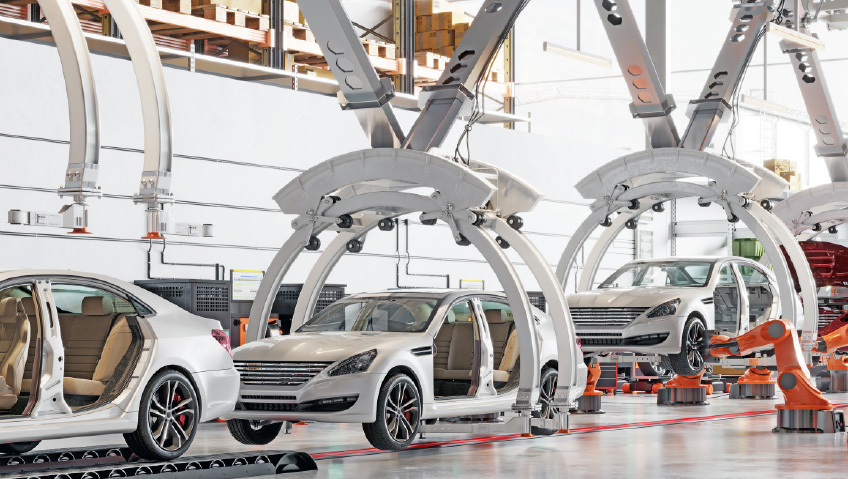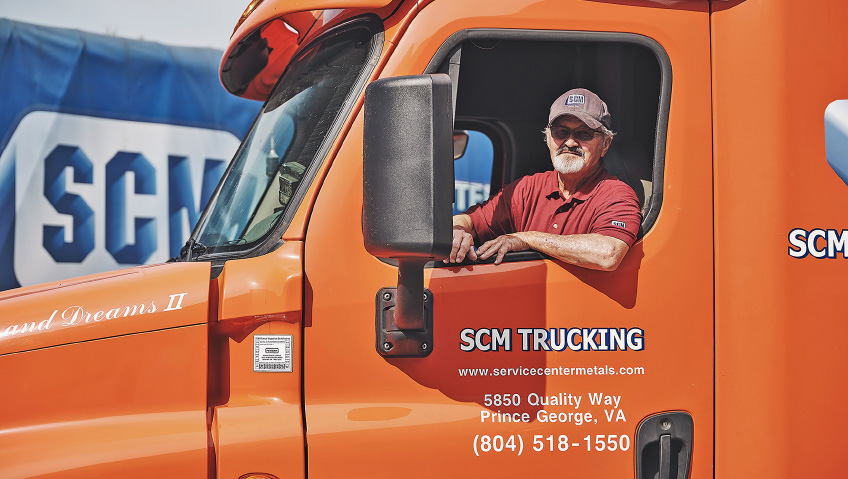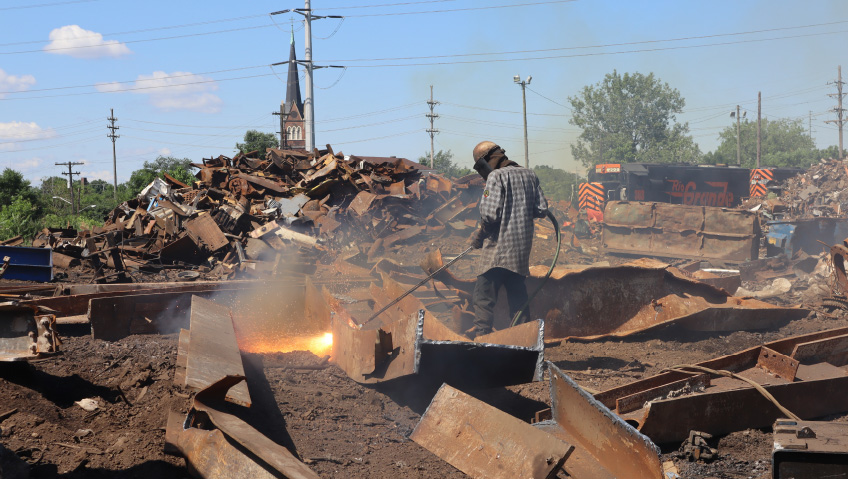Located just outside Atlanta, in Fayetteville, Georgia, Hazard Control Technologies, Inc. (HCT), an ISO 9001 registered company, is an engineering and manufacturing company that provides solutions at scale for fire, vapor, and contamination hazards.
The company began in 1997 as a single fire suppression product manufacturer and has grown to a multi-faceted manufacturing company, providing fire suppression and environmental impact protection chemical agents, fire suppression delivery fixed systems and equipment, training, and consulting services, supported by its own engineering, consulting, and technical resources.
In addition to its manufacturing facility in Georgia, HCT works with a global network of distributors across North, Central, and South America, the Caribbean, Europe, Africa, Australia, India, and Asia, where municipal fire departments, tank cleaning contractors, power plants, bioremediation companies and a multitude of industrial companies use its products and resources.
Among HCT’s products are Pinnacle, a fluorine-free Class A firefighting foam that helps the water on a fire truck stretch further; HydroLock® for efficient tank degassing and cleaning, dropping the lower explosive limit quickly; Dust Wash to prevent flare-ups and excessive runoff from accumulated grain particles, coal dust, or sawdust; and F-500 EA®, the revolutionary Encapsulator Agent, newly recognized by the 2022 edition of NFPA 18A Section 7.7.
Introducing F-500 EA®
To learn more about it, we speak with Hernan Dominguez, HCT’s Vice President of Sales and Marketing, who joined the company six years ago, bringing, from his native Argentina, broad industry experience as a safety engineer and business owner.
He tells us how early in the 2000s the company’s chemical engineers began looking at new and unique fire hazards associated with modern manufacturing, namely lithium-ion batteries that are ubiquitous through their use in consumer electronics, electric vehicles, industrial equipment, and energy storage systems.
Another significant manufacturing change in the early 2000s was the replacement of steel, in certain applications, with lighter alloys such as aluminum, magnesium, and titanium. As flammable metals, they presented new firefighting challenges for industry, including at scrap yards where they could be combined with tires and plastics, and at recycling plants.
By 2008, the company’s chemical engineers were ready to begin third-party testing of the innovative Encapsulator Technology on lithium-ion battery fires. This scientific testing is recognized by NFPA 18A Annex 4.3 as lithium-ion battery hazards continue to be a source of growing risks within all industries and the fire service. F-500 EA® would revolutionize the approach to firefighting and hazard mitigation and now is poised to become industry standard.
Not only has this technology proven its superior ability to effectively deal with fires caused by lithium-ion batteries and flammable metals, Dominguez says it has also demonstrated superior hazard-control applications for the oil and gas industry. It can clean up spilled flammable liquids before they ignite, de-gas flammable liquid tanks for cleaning, disperse oil, wash soil, and enhance bioremediation.
He goes on to share a detailed document he authored, outlining the science supporting the F-500 EA® and firsthand observation of the incredible capabilities of the agent in action.
Fire control transformed
We learned that the “F-500 EA® is a unique chemical that can encapsulate hydrogen and hydrocarbons at a molecular level. Spherical Micelles form in water instantaneously, allowing for encapsulation, rapid heat reduction, and an interruption of the free radical chain reaction.
In layman’s terms, lithium-ion batteries, when ignited, are subject to a chain reaction of the combustion process, known as thermal runaway. The propagation of thermal runaway can’t be stopped by conventional firefighting means, as it is not enough to smother the flames by cutting off their oxygen supply. So the encapsulator agent instead extinguishes the fire in three different ways.
Dominguez explains: “If you remove the heat, you extinguish the fire. If you render the fuel non-flammable, you extinguish the fire, and if you interrupt the chain reaction—those free radicals that sustain the combustion—you stop thermal runaway propagation. At the same time, the thickest, extremely toxic black smoke turns into a warm, white vapor, with testing revealing that up to 98.6 percent of the toxins, including carcinogenic toxins, and 96 percent of the soot can be removed to protect the health and safety of company personnel, fire brigades, and firefighters.”
He speaks about the agent’s ability to deal with fires at electric power facilities, at call centers where there are rows and rows of lithium-ion battery-powered computers at work, and in parking garages with electric vehicle charging stations. Water or foam would not work to smother the fire in these circumstances because they’re incapable of lowering the heat and stopping the chain reaction. In addition, the intensity of the heat, up to 600°C, causes water to evaporate and the resulting steam can weaken concrete, as happened in a parking garage in London, causing the building it was supporting to collapse.
By dispersing the encapsulator agent through a sprinkler or deluge system, such a fire could be put out within minutes, with the structural integrity of the building secure and the cars parked adjacent to the burning car unscathed. This is especially effective in today’s parking garages, substations, battery energy storage systems, aircraft hangars, and more to protect businesses in all markets and maintain continuity. To demonstrate his point, he shared images of a successful Applus+ certification test carried out in a parking garage in Spain.
F-500 EA® also has the potential to make a significant contribution to fighting the wildfires and forest fires that have caused massive destruction in California, northern British Columbia, and Alberta in recent years. Mixed with small amounts of water, it can be delivered by plane or helicopter to the site, or through the hoses of frontline firefighters, vastly reducing the massive amounts of water commonly used. Encapsulator Technology can preserve human life as well as wildlife and reduce the toxicity of wildfire smoke, a leading cause of lung cancer and other diseases plaguing wildland firefighters.
Put to the test
“In 2019 I went to the Amazon to train firefighters,” Dominguez says. “They’d been fighting a fire for fifteen days in the middle of the Amazon Rainforest, and it was amazing to see the results, how quickly the fire was put out. They did more tests last year, and now they are looking to replace foam with this technology because it is fluorine-free and can’t harm the environment. Plus, it works.”
Fires at scrapyards and recycling plants, with their volatile mix of metals, rubber, plastics, fluids, and other materials, are of huge concern as they produce highly toxic smoke, adversely affecting not only the firefighters but covering a wider area that may encompass population centers and agricultural activities.
HCT has an affiliation with the Recycled Materials Association (ReMA) (formerly ISRI—the Institute of Scrap Recycling Industries) where the F-500 EA® is making a huge impact. Dominguez shared with us two dramatic videos of such fires, one in Kansas and the other in Florida, where we watched the toxic black smoke turn to a white vapor within minutes.
Improving on water
The key to understanding how this works, he says, is understanding the difference between the F-500 EA® droplet and a water droplet. “As a plain water droplet gets near the heat source, heat is removed as steam at 212°F (100°C). When it’s used on a small fire, water can extinguish it, but with a large fire, the water evaporates and never reaches the source.”
Adding foam to water to create a substantial blanket may temporarily knock down the surface fire, but the heat below is trapped, and as the foam blanket disintegrates, the fuel that has been smoldering can reignite.
By contrast, “The F-500 EA® droplet removes heat through thermal conveyance. As the droplet gets near the fire, it doesn’t evaporate; it draws the heat into the droplet, like a thermal circuit. There is no scalding steam after the fire.”
Sharing F-500 technology
We also speak with marketing specialist Heather Emmet, who tells us that extensive third-party testing on the F-500 EA® has been carried out around the world since 2008.
In its first decade of testing in Germany, F-500 EA® showed superior results in comparison testing of water, foam, and powder at Kiwa, an autonomous global organization in testing, inspection, and certification (TIC), training, and consultancy services. This testing has been published by Johnson Controls as they continue to endorse F-500 EA® for lithium-ion battery fire suppression today.
In 2012, BrandSchutz Firefighter Magazine reported that in addition to suppressing fires resulting from lithium-ion batteries, the F-500 EA® can mitigate other risks, including fires involving flammable metals such as magnesium and titanium, rubber tires, and multiple fuels, such as gasoline, diesel, ethanol, and ethanol-blended fuels.
Other tests continued between 2016 and 2023 in the U.S. (General Motors, Tesla, ConEdison, Port Authority of New York and New Jersey, National Institute for Occupational Safety & Health (NIOSH); in the UK (Jaguar); in the Netherlands (Kiwa); in China (Nanjing Technical University, Beijing Institute of Technology); and in Italy (Sapienza University of Rome), all pointing to F-500 EA® as a superior fire suppressant and hazard control product.
Backed by the extensive and exhaustive testing the F-500 EA® has undergone, plus its stamp of approval from leading organizations which have implemented its use, including the Port Authority of New York and New Jersey in 2022, “HCT is now focused on educating and training industry professionals to protect their businesses, employees, assets, and reputation,” says Emmet. “In addition, HCT is working with its distributors so they can educate and train firefighting professionals around the world to respond to fires safely and effectively with F-500 EA®.”
Dominquez recalls conversations he’s had with firefighters who proudly talk about their huge trucks and vast amounts of water expended attempting to put out fires and, on the flip side, recycling plant managers who are frustrated by firefighters “who spend hours and sometimes days trying to extinguish fires with water or foam. We have to teach people how they can be much more effective fighting fires without massive amounts of water while prioritizing safety,” he emphasizes, “how they can reduce toxicity by encapsulating the vapors and make a positive impact on the environment by not wasting water reserves. We have to demonstrate how F-500 EA® works and change people’s mindsets.”






